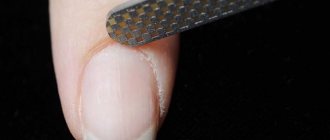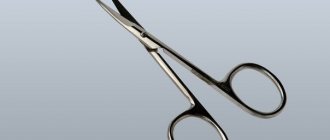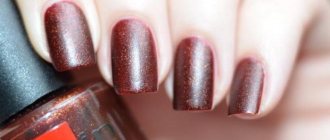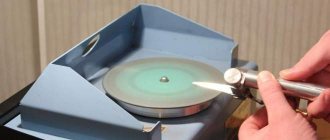There are many ways to keep your nails in good condition. Particular attention should be paid to the cuticle - this is a very delicate area that requires careful handling and careful treatment. It is removed using a remover, scissors, nail file or nippers. Another useful tool that makes care much easier is a pumice stone for removing cuticles. Due to the ease of working with it, pumice can become an indispensable tool for home manicure.
What kind of instrument is this?
Europumice is a ceramic file-bar, which is most often made from a compressed mixture of aluminum and porcelain. It has a pointed tip, which significantly increases the efficiency of work and simplifies it. In this case, there is no damage to the cuticle, since the surface of the pumice is quite smooth and soft. You can find different types of pumice stones on sale. The toughest of them is yellow, pink is a little softer, and the most gentle version of the tool is gray.
Learning to use pumice is not difficult. Just a few practice sessions and you will be able to operate this tool with ease. From the moment this happens, manicure will turn into an easy and enjoyable experience for you. Europemza perfectly copes with defects such as cracks or burrs around the nail, which can arise as a result of improper hand care or poorly performed trimming manicure. The convenient shape of the tool and the fine-grained surface gently eliminate all visible defects, align and smooth the skin around the nails.
Aftercare
It is very important to take care of your skin in between using the pumice stone. Immediately after exfoliating with a pumice stone, dry your skin and add a gentle moisturizer.
In the first days after use, continue to moisturize your skin with a chemical-free cream or moisturizing oil such as jojoba oil, olive oil or coconut oil. Using a keratolytic agent between pumice applications, such as creams containing salicylic acid, may also help.
Proper cleaning of the stone is also very important. If left unclean, it will become a home for bacteria and can lead to skin infections or irritations. Simply use soap and water to clean the stone and its internal pores. Then let it dry completely before storing it.
Step-by-step instructions for working with pumice
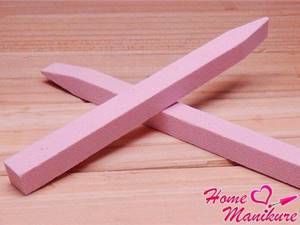
Using a pumice stone is quite simple - even a girl who has never done a manicure on her own can easily handle it. To perform a high-quality unedged manicure, you will need hand and nail oil, a cuticle growth retardant, and a pumice stone.
- Manicures should be performed on dry skin. First, treat the cuticle area, carefully grinding it down with gentle movements. The pumice stone should not put strong pressure on the skin. You need to place it perpendicular to the nail with the pointed side. Work the side rollers with quick movements, keeping the pumice stone parallel to the skin. In the area of the burr, movements should go strictly from the center to the edge. Try not to touch the nail plate so as not to injure it .
- At the second stage of the manicure, pumice stone will be needed to remove all hard areas around the nail. They are especially pronounced in the very corners.
- Europemza is a universal tool. It can be used not only for cuticles, but also for filing the free edge of the nails. Give them the necessary shape, bring it to perfection.
- In the next stages it is better to use a manicure buffer. To make your nails look perfect, you need to sand and polish them to a shine, correcting any imperfections that were left untouched by the pumice stone.
- Apply any product to slow down cuticle growth on the skin around the nail.
- At the end of your manicure, no matter how you do it, be sure to soften your skin with nourishing oil or cream.
As you can see, using pumice is very simple. This is a great tool for treating even rough cuticles. It is very important to get a clear understanding of how to work with each new tool, so we invite you to watch a detailed training video.
Advantages and disadvantages
Pumice has a porous structure and consists of aluminum oxide pressed with small particles of porcelain. Thanks to its shape and the materials used, it cannot damage nails or injure the skin. This remedy has been known for hundreds of years and has been used since ancient times. Positive aspects of using pumice:
- prevention of burrs;
- effectively removes dead cells;
- has a natural composition;
- does not cause harm to nearby healthy tissues, does not injure the skin and nail plates;
- durability, can be used tens and hundreds of times;
- safe;
- an easy-to-use tool that does not require special skills;
- It is compact, you can take it with you, it does not take up much space in your cosmetic bag.
Does this product have any disadvantages? Perhaps the only thing is that if you have skin diseases or injured skin, you shouldn’t use it, because the situation can only get worse. Many people do not like the fact that the procedure is quite lengthy. Processing each finger takes quite a long time.
Some useful tips
If you decide to switch to an unedged manicure using European pumice, then a few useful tips will help you process the cuticle area faster and better.
- We looked at performing a manicure on dry skin. But if you haven’t had a manicure for a long time, and your cuticles are in disrepair, then it is still recommended to steam your hands for just a few minutes in a warm bath. This will help soften rough skin and then remove it faster.
- Before the bath, it will be useful to add one more procedure - applying a remover. This is a special softening cuticle remover that literally dissolves dead skin cells, making manicure much easier. Also, do not forget to go over the cuticle area with a pusher and a hatchet, pushing it back and removing the pterygium.
- Choose the hardness of pumice depending on the characteristics of your cuticle. If your problem is rough and grows very quickly, then give preference to the yellow tool. For soft and thin cuticles, gray pumice is more suitable. Pink is an option that can be used in both cases.
- Don't forget to use a cuticle growth retardant. It can be anything - oil, a special pencil or cream.
Pumice and our useful tips will help you always keep your hands and nails in perfect condition. However, besides pumice, there are many more very useful, necessary and convenient tools for manicure. If you are just starting to master the art of caring for your nails, then we invite you to watch a very interesting and useful video in which you will find an overview of various manicure tools. All of them can be simply irreplaceable if you are inclined to perform a manicure at home.
Price of European pomegranate for cuticles: can it be bought on the Internet?
For those who are interested in pumice for cuticles, buying it will not be difficult. It is sold in online perfume and cosmetics stores (for example, aroma-butik.ru) at prices ranging from 180 rubles and above.
You can also buy European cuticle mortar in specialized stores in Moscow, St. Petersburg, Omsk, Kharkov, Yekaterinburg, Saratov, Novosibirsk and other large cities in Russia and Ukraine.
- Thus, the average price of European pumice stone for manicure in Kyiv online stores is 54 hryvnia. In Odessa - 69 hryvnia.
- You can also order pumice stones for manicure at foreign online auctions, such as Ebay or Aliexpress. The cost of one file varies from 80 to 100 rubles. But it is more profitable to purchase a lot of 5 nail files (costs about 450 rubles).
Execution technology
Next, I will introduce you to how to do a dry European manicure using remover yourself at home. It is assumed that there is no old coating on the nails. If this is not the case, then remove it and proceed to the manicure.
- First of all, you should use a file to adjust the shape and length of your nails. This is done at the very beginning on dry nails; wet nails are not filed - this leads to their delamination.
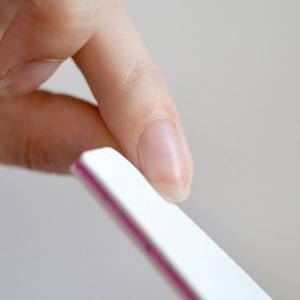
- Next, use a slightly coarser file to process the skin of the side bolsters. I have a double-sided file 180 and 220 grid from Fiore, I just turned it over.
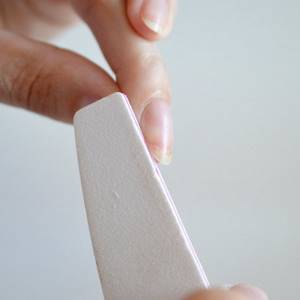
- Apply a cuticle softener to the cuticle. Here I used Bal professional with vitamins A, E and jojoba oil. It can be applied to all nails of one hand at once and left for 2-3 minutes to do its work. The product is transparent, gel-like, and has its own dispenser, which you need to get used to, since you can apply too much remover at once. This is not terrible for the skin, but it increases consumption. The effect of different agents varies in time, but does not exceed 10 minutes.

- After softening, the keratinized skin can be easily removed with an orange stick. I was pleased with the Bal professional product here: it does not sting, it works softly and delicately, and it does its job quite well.
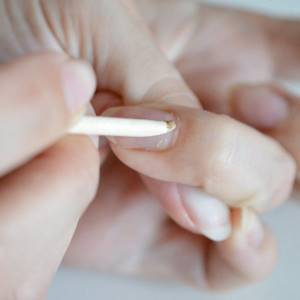
- Remove any remaining gel by rinsing with warm water or wiping with a dry cloth.

- Use the sharp end of the stick to clean the subungual space.

- In the next step, you can use a polishing file and polish the surface of the nail.
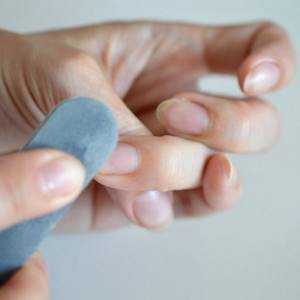
- For extra care I use nail wax. You can read his review here.
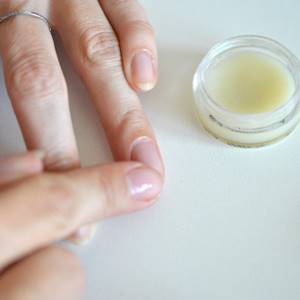
- Nourishing oil is applied to the cuticle area and rubbed in with massaging circular movements.
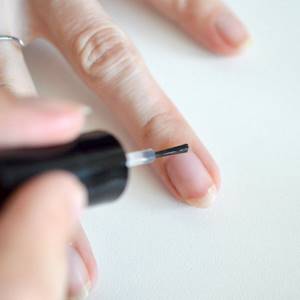
- Use your favorite cream to care for your hand skin.
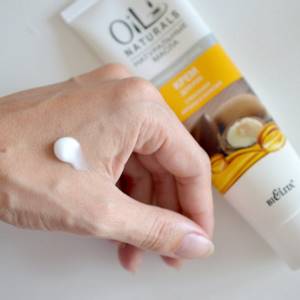
In other sources you can find slight differences in the procedure, but the classic “basis” is the same in all of them.
Photos before and after
Here is the result of this procedure on my hands before and after:

It can be seen that the cuticle is not removed to zero, as when cutting it off in a classic manicure. For better results, at least five such procedures must be performed. To apply decorative coating with varnish or gel polish, you need to lift it and move it again.

